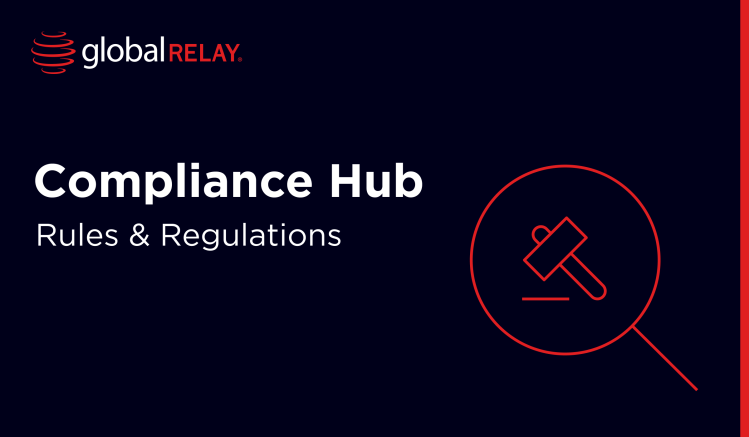
FERC Market Transparency for Compliance
If you're in the energy sector, you’ve probably heard of the Federal Energy Regulatory Commission (FERC). But even if you're not familiar with the ins and outs of this federal agency, there's one key thing to know: FERC plays a critical role in ensuring transparency, fairness, and reliability across U.S. energy markets.
Written by a human
And recently, they’ve been stepping up enforcement. In 2024 alone, FERC opened 30 new investigations. That’s a strong signal to energy companies to brush up on the rules and strengthen their compliance efforts.
So, what does FERC mean by ‘market transparency’, and how can companies meet these requirements while continuing to grow and protect their business?
What are the FERC Market Transparency Rules?
Market Transparency Rules set standards for operations and disclosures.
The FERC rules are designed to ensure that everyone in the energy market has a fair playing field. The core idea is simple: make operations and pricing more visible to both regulators and the public to prevent manipulation and promote trust.
Here are some examples:
| Rule | Requirements |
| Order no.704 | Companies that manage over 2.2 million MMBtus of natural gas annually must report their physical gas transactions to FERC. |
| Electric Quarterly Reports | Standardized filings that include rates and charges, improving transparency and data quality. |
| E-1, RM17-2-000 | Monthly reports explaining why extra charges (uplift charges) are applied by grid operators, and for how long. |
| E-2, RM17-8-000 | Requirements that improve transparency across different energy market participants to ensure fair access to infrastructure. |
These rules, among others, ensure that market data (like who’s selling what, at what price, and why), is published, scrutinized, and verified. That helps prevent practices like unfair pricing or hidden fees and protects the market’s integrity.
Although these actions are typically performed for immediate personal gain, shifts in energy pricing, usage, and transactions can affect the entire energy market, highlighting the importance of the rules.
Therefore, any company operating within the U.S. energy market must abide by the FERC transparency rules to maintain overall market integrity and operational resilience.
Compliance Challenges with FERC Transparency
- Collecting, validating, and reporting vast data sets
- Meeting strict deadlines and disclosure standards
- Data Management and Privacy Implications
Collecting, validating, and reporting vast data sets
It’s well-known that incumbent companies struggle to tap into their vast lakes of data. Unlike banking that already uses mature data systems, the energy sector still finds them novel, lacking the infrastructure for structured, categorized reporting.
Energy firms must find ways to put systems in place that automatically clean, verify, and structure information for FERC regulatory reporting, not only for efficiency purposes but also to meet the strict validation requirements of compliance.
Meeting strict deadlines and disclosure standards
Timelines for compliance can be tight for energy transparency regulations. For example:
- 150 days to complete certain transmission studies
- 20 days to notify a transmission provider about possible system impacts.
- 15 business days to provide cost and scheduling estimates for system studies
And that’s just the technical side. On the business side, companies also need to disclose ownership details of any investor or affiliate who owns more than 10% of voting rights.
Control versus transparency
In March 2024, a case involving ECP ControlCo showed how complex this can get. ECP wanted FERC’s approval for a business deal that would give Bridgepoint nearly 20% ownership. But because another entity, Blue Owl, had a stake in Bridgepoint, FERC worried that Blue Owl might indirectly control ECP.
FERC data compliance doesn’t just look at who owns what, it looks at who has control. Without clear safeguards in place to limit influence, the deal was rejected due to concerns about transparency and oversight.
Data Management and Privacy Implications
Energy transparency regulations also ask systems to consider data privacy, especially when it comes to personally identifiable information (PII).
Regulations like GDPR and the California Consumer Privacy Act (CCPA) ask firms to consider an opposing perspective to transparency - confidentiality.
Best practices for protecting against data breaches include:
- Internal controls - preventing unauthorized access to sensitive data
- Secure encryption - protecting against brute force attacks
- Proactive risk management - including communications monitoring to identify data threats before they happen
In 2019, three energy companies were fined for their data failings.
Pacific Gas & Electric, DTE Energy, and City Utilities each faced enforcement actions for violating critical infrastructure protection rules. The importance of following these rules must not be understated, because the energy industry is critical infrastructure in the U.S. and globally - so any interruptions or outages tend to have much larger impacts than in other industries.
Even worse, these violations coincided with a Russian campaign attempting to infiltrate American utility defenses, likely compounding the risks and associated penalties.
Strategies for FERC Compliance
A robust FERC compliance energy strategy involves the likes of data governance, automated reporting, and regular staff training.
When handling or collecting sensitive data, firms must follow NERC Critical Infrastructure Protection standards, enforced by FERC. This documentation must always be ready for audits or investigations.
Energy firms should build regular risk assessments and vulnerability scans into their operations to keep up with the evolving threat landscape. Similarly, regular incident response drills are a strong way to prepare staff and systems, creating opportunities to practice and perfect a faster response. This should help limit the fallout of any critical event.
With regards to reporting sensitive data, FERC’s pre-existing procedures enable firms to submit confidential documents with separate public and non-public versions. Using this system and ensuring that staff are properly trained to avoid mistakes, is a key part of compliance.
Balancing transparency with privacy in energy market transparency
An upward trend in FERC enforcement actions means that compliance and scrutiny are only getting tougher for energy firms. But balancing reporting and transparency with the protection of sensitive data is key.
